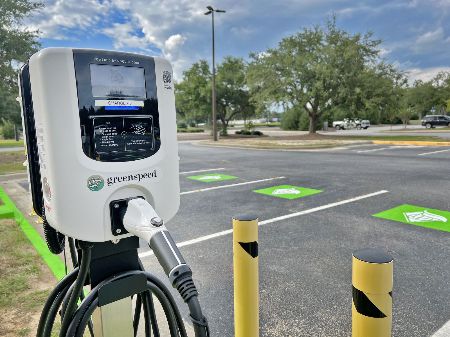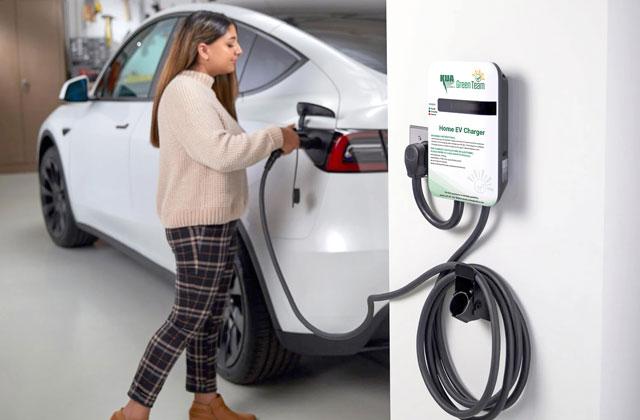What’s Driving the Growth of EV Infrastructure? Buy EV Charging news for Key Updates
What’s Driving the Growth of EV Infrastructure? Buy EV Charging news for Key Updates
Blog Article
New Dope in EV Charging: How the Sector Is Developing to Fulfill Need
As the electrical vehicle (EV) market proceeds to broaden, the billing infrastructure is undertaking substantial improvements to resolve the surging need. The ramifications of these advancements increase crucial questions concerning the future of EV billing and its role in the broader power ecosystem.
Growth of Billing Facilities
The rapid expansion of electric lorry (EV) billing infrastructure is a vital part in facilitating the widespread fostering of electrical wheelchair. As federal governments, private business, and customers significantly recognize the value of lowering carbon emissions, investments accountable networks have actually risen. This framework development is important to reduce range stress and anxiety, making certain that EV customers have practical accessibility to billing terminals.
Substantial developments in billing terminal innovation and implementation techniques have actually emerged. Urban areas are seeing a spreading of public charging terminals, while country regions are slowly being integrated into the billing network. Additionally, collaborations in between automobile producers and charging carriers are coming to be extra common, facilitating the facility of detailed networks that enhance user experience and accessibility.
In enhancement, the assimilation of renewable resource resources right into charging terminals is gaining energy, promoting sustainability in the EV community. This transition not just supports ecological goals but also straightens with the rising need for eco-friendly energy options among consumers.
Ultra-Fast Charging Technologies
Ultra-fast charging innovations represent a considerable jump ahead in the EV billing landscape, allowing electrical lorries to charge in a portion of the time compared to traditional charging techniques. These innovations typically supply power levels exceeding 150 kW, with some systems getting to up to 350 kW or more, substantially minimizing charging times to as little as 15-30 minutes for a considerable fee.
Key enabling innovations consist of innovations in battery chemistry, power electronics, and thermal monitoring systems. As an example, high-capacity batteries with boosted thermal stability allow for faster billing without overheating. Furthermore, growths in billing framework, such as liquid-cooled cords and modular charging stations, assist in efficient power transfer, improving the general customer experience
Major automotive makers and technology companies are proactively purchasing ultra-fast billing networks, acknowledging the important function they play in getting over variety anxiety and increasing the fostering of electric cars. As these technologies become much more commonly available, the EV market is anticipated to witness significant development, making electrical wheelchair a more attractive alternative for customers. Generally, ultra-fast billing innovations are crucial in forming the future of sustainable transport, leading the way for a much more effective and comprehensive billing community.
Smart Grid Integration

Via need feedback techniques, wise grid systems can readjust billing timetables based upon grid problems and electricity pricing. For example, throughout periods of high demand, billing can be postponed to off-peak hours, resulting in reduced costs for consumers and reduced strain on the grid. Furthermore, vehicle-to-grid (V2G) modern technologies allow EVs to discharge energy back into the grid, boosting and providing secondary services grid security.
Combination with eco-friendly power resources better increases the sustainability of EV charging. By aligning billing activities with durations of high solar or wind generation, wise grids advertise a greener charging infrastructure. Inevitably, wise grid combination not just supports the expanding need for EVs however also adds to an extra resilient and lasting energy future, positioning the sector for lasting success.
Battery Innovations
In the middle of the fast advancement of electric cars (EVs), battery developments stand at the forefront, driving innovations in sustainability, performance, and efficiency. As the need for EVs surges, producers and researchers are concentrating on boosting battery modern technologies to attend to challenges such as array anxiety and charging times.
Lithium-ion batteries stay one of the most widely made use of innovation, yet new materials and chemistries are emerging to boost power density and durability. Solid-state batteries, for example, assure greater power storage capacity and boosted safety and security by changing liquid electrolytes with solid ones. This change can significantly lower the risk of fire and boost the lifespan of batteries.
Moreover, improvements in battery reusing procedures are important for sustainability. Companies are developing techniques to anchor recover important products like lithium, cobalt, and nickel from made use of batteries, advertising a circular economic climate and lowering environmental influence.

International Billing Specifications

Initiatives are underway to establish worldwide billing standards that assist in compatibility amongst numerous EV models and charging stations. Organizations such as the International Electrotechnical Compensation (IEC) and the Culture of Automotive Engineers (SAE) are functioning collaboratively with auto manufacturers and power companies to develop detailed guidelines. EV Charging news. These standards objective to improve the charging process, decrease the requirement for several adapters, and improve user experience
Additionally, standardization can significantly bolster the expansion of the billing network, as it motivates financial investment by making framework growth extra reliable and foreseeable. As the EV market develops, a unified technique to billing criteria will certainly be crucial for making certain that consumers can bill their lorries comfortably and dependably, thus sustaining the broader change to lasting transportation.
Conclusion
The electrical lorry billing industry is undertaking considerable improvement to deal with the surging need for sustainable transport. Innovations in billing infrastructure, ultra-fast technologies, smart grid assimilation, and ingenious battery options are crucial in boosting individual experience and functional performance. The pursuit of international charging criteria is important for making sure interoperability across various regions and my explanation systems. Jointly, these advancements position the sector to support a more comprehensive adoption of electric lorries, ultimately adding to a more lasting future.
Urban areas are seeing an expansion of public billing terminals, while country areas are slowly being incorporated right into the charging network. Additionally, growths in charging facilities, such as liquid-cooled cables and modular charging stations, assist in effective power transfer, boosting the total user experience.
Overall, ultra-fast billing modern technologies are pivotal in shaping the future of lasting transportation, paving the method for a much more considerable Get More Information and efficient charging ecosystem. - EV Charging news
By aligning charging activities with periods of high solar or wind generation, wise grids promote a greener billing infrastructure.Initiatives are underway to establish worldwide billing standards that assist in compatibility amongst different EV designs and billing terminals.
Report this page